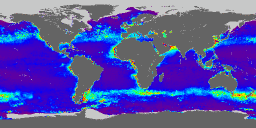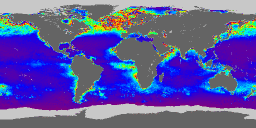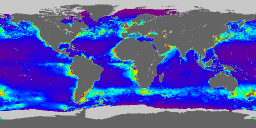Sponsored by: National Aeronautics and Space Administration
Project Period: October 1, 1997 – September 30, 2000
Principle Investigators: Michael J. Behrenfeld, Paul G. Falkowski, and Zbigniew Kolber
Achieving the goals of NASA’s Mission to Planet Earth regarding the role of the oceans in global biogeochemical cycles requires both fidelity in the estimation of net phytoplankton primary production and an established mechanism for generating comparable ocean productivity data products across successive generations of ocean color sensors.
Currently, only about half of the observed variability in depth-integrated primary production (IPP) can be accounted for by any productivity model and there is no organized procedure for establishing and updating a standard algorithm for generating productivity data products. This research project comprises both fundamental studies on phytoplankton photosynthesis and working group activities which specifically address these issues.
Basic research is being conducted to improve the characterization of the maximum rate of carbon fixation within the water column (Pbopt), the estimation of which is currently the greatest source of error in productivity model estimates of IPP. The physiological model for Pbopt is based on the assembly and analysis of a variable fluorescence database. Model parameterization emphasizes process oriented relationships and is based, to the greatest extent possible, on remotely sensed physical variables.




Our primary goal is to provide databases, algorithm structure and code, and an investigator-independent framework that permits continuity, validation, and quality assurance for primary production calculations into the 21st century.
For more information about this project, please visit our Ocean Primary Productivity Study, IMCS, Rutgers University web site.
